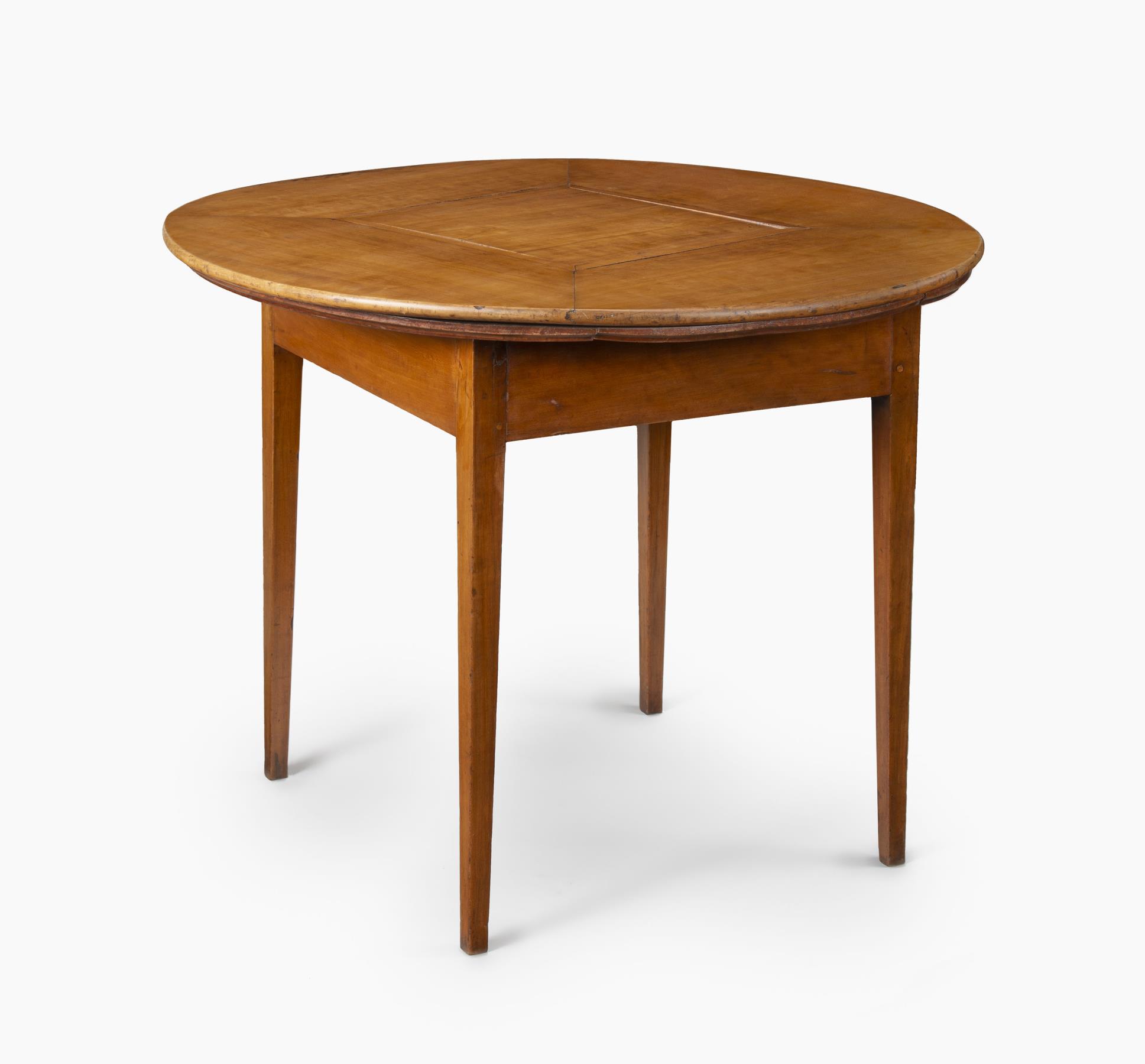John Hemmings

Currently, this table is the one object that can be definitively assigned to have been made by John Hemmings; click image to learn more
John Hemmings (1776-1833) was an enslaved joiner at Monticello. He was the son of the enslaved Elizabeth Hemings and, it was said, Joseph Neilson, one of the white housejoiners that Thomas Jefferson hired in the 1770s. Hemmings started his working life as an "out-carpenter," felling trees and hewing logs, building fences and barns, and helping to construct the log slave dwellings on Mulberry Row.
John Hemmings must have demonstrated his ability early, for at the age of seventeen he was put to work under a succession of skilled white woodworkers hired by Jefferson to enlarge the main house. Hemmings learned to make wheels and fine mahogany furniture, and to use an elaborate set of planes to create decorative interior moldings. He was principal assistant to James Dinsmore, the Irish joiner responsible for most of the elegant woodwork in the Monticello house. Hemmings succeeded Dinsmore as head joiner in 1809, making fine furniture for Jefferson, including cabinets, chairs, and tables. He alone crafted much of the interior woodwork of Jefferson's house at Poplar Forest in Bedford County, Virginia. Unfortunately, his woodwork at Poplar Forest was destroyed in a fire. He also made all of the wooden parts of a large landau carriage Jefferson designed in 1814. He thus became far more than a carpenter — he was a highly skilled joiner and cabinetmaker. He was also literate, and some of the letters between him and Jefferson survive, mainly in which they communicated about the construction of the house.
Video about the Elliptical Arch, which John Hemmings built with James Dinsmore
John and Priscilla Hemmings were described with fondness in family letters by Jefferson’s grandchildren. These letters tell of Hemmings making toys and furniture for Jefferson’s family, and complicated terms like “Daddy” and “Mammy” were used by the Jefferson and Randolph families for both Hemmings and his wife. While these words can be read as terms of endearment, and while genuine affection may have existed between some enslaved people and their masters, such language also served as a powerful and subtle tool that constantly reminded enslaved people of their subjugated status. As the thoughts of John and Priscilla Hemmings went mostly unrecorded, their feelings are lost to history. But the Hemmingses certainly lived in close proximity to the Jefferson family, and their lives were entangled with the Jefferson and Randolph families by ties of bondage and kinship, leaving open a full range of possibilities.
The couple were devoutly Christian. Priscilla Hemmings passed away the night of a prayer meeting at their house in May of 1830. At her death, John Hemmings was distraught and fell into deep depression. He carved her headstone, on which he described her as his, “dear affectionate wife.” At this time, he had already been freed by Jefferson in his will, which also had provided him the tools from the Joiner's Shop as well as the service of his two apprentices. He continued to live at Monticello until 1831, doing occasional work for Jefferson's family members.
Further Sources
- Gordon-Reed, Annette. The Hemingses of Monticello: an American Family. New York: W.W. Norton & Company, 2008.
- Stanton, Lucia. Free Some Day: The African-American Families of Monticello. Charlottesville: Thomas Jefferson Foundation, 2000.
- Self, Robert L., and Susan R. Stein. "The Collaboration of Thomas Jefferson and John Hemings." Winterthur Portfolio vol. 33 no. 4 (1998): 233-48.
- Stein, Susan R. The Worlds of Thomas Jefferson at Monticello. New York: Harry N. Abrams, Inc., 1993. See index for references to items attributed to John Hemmings.



